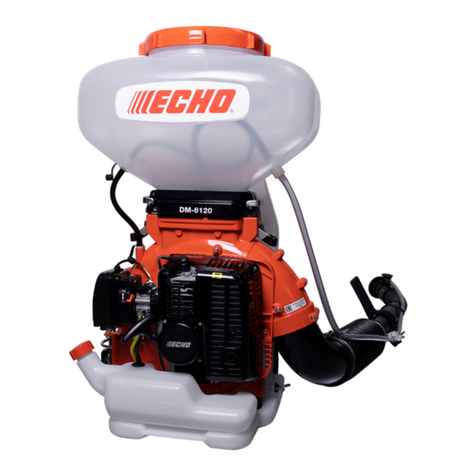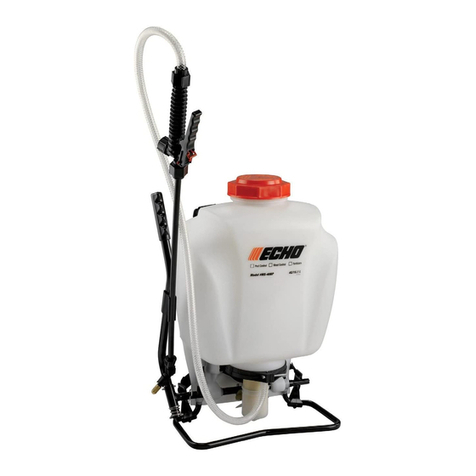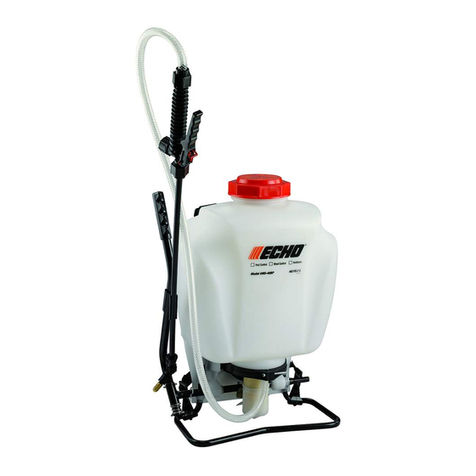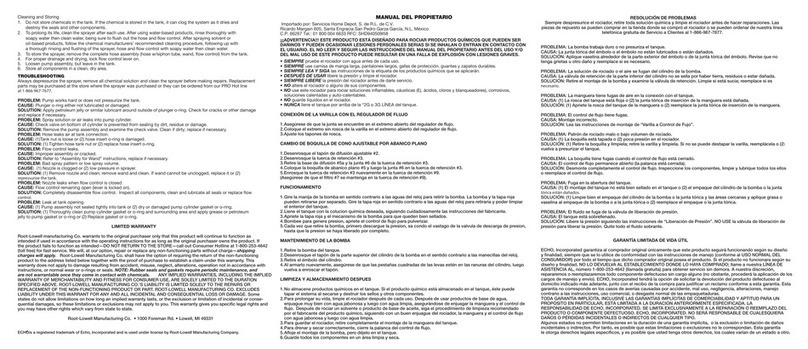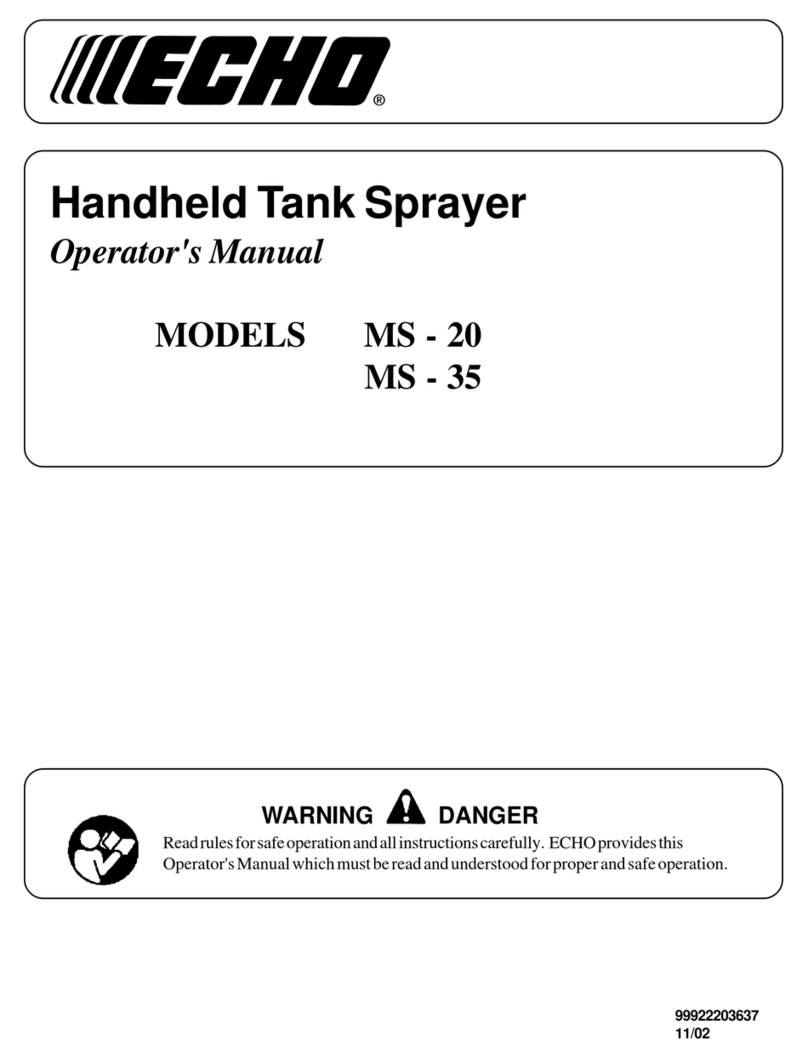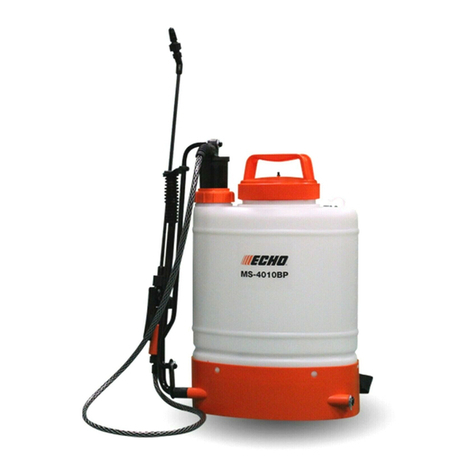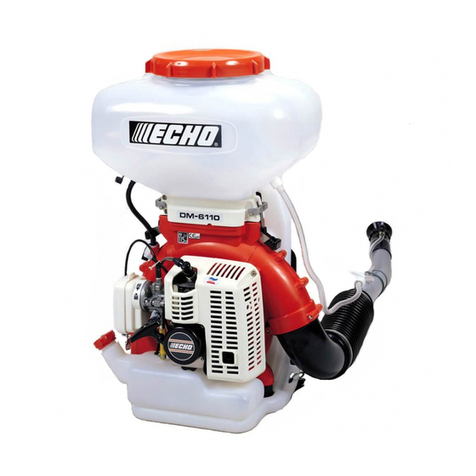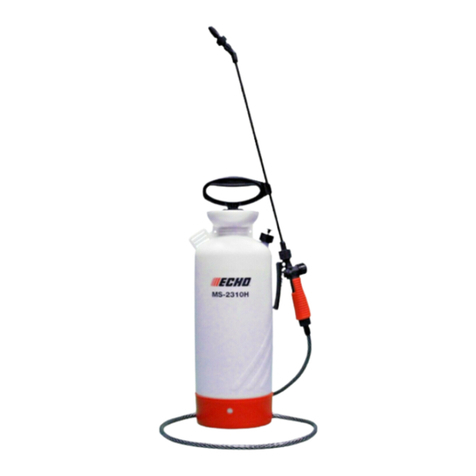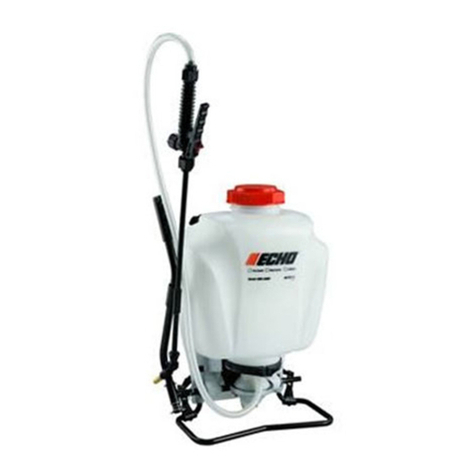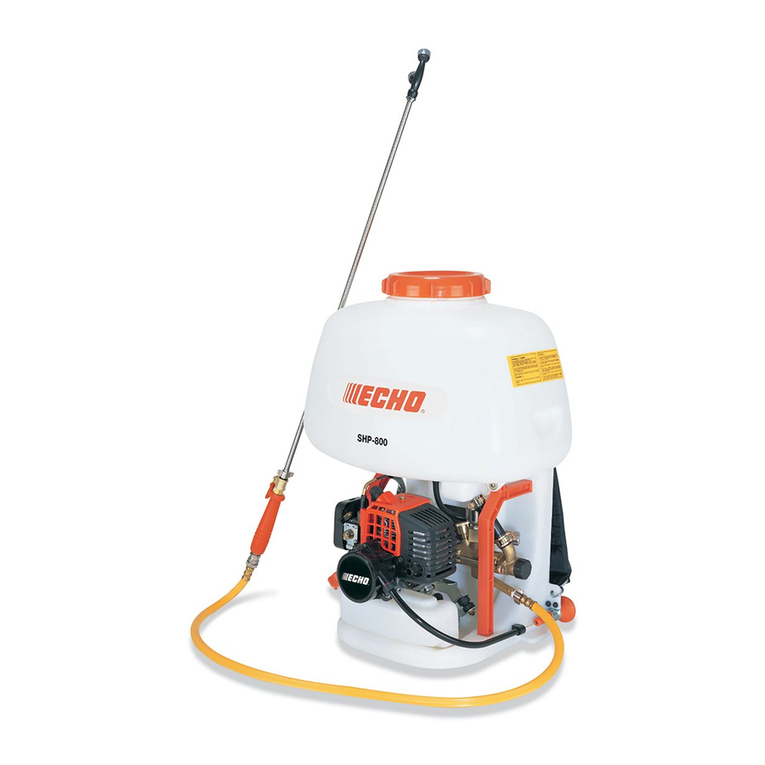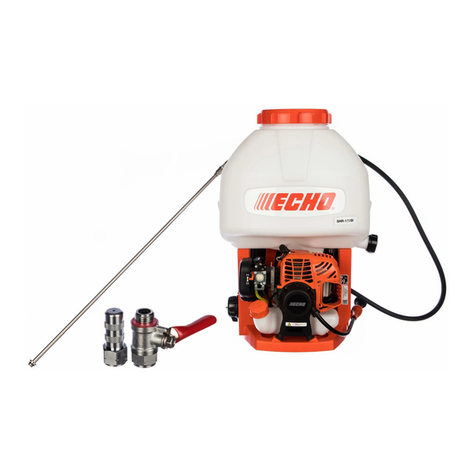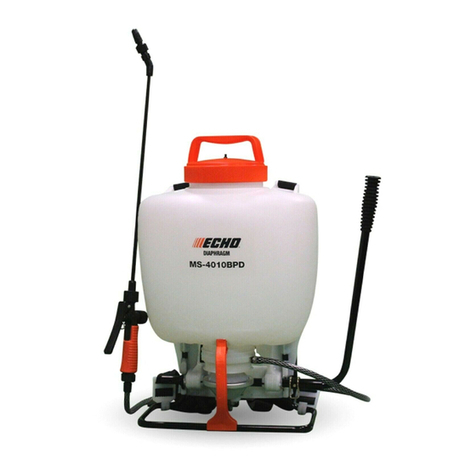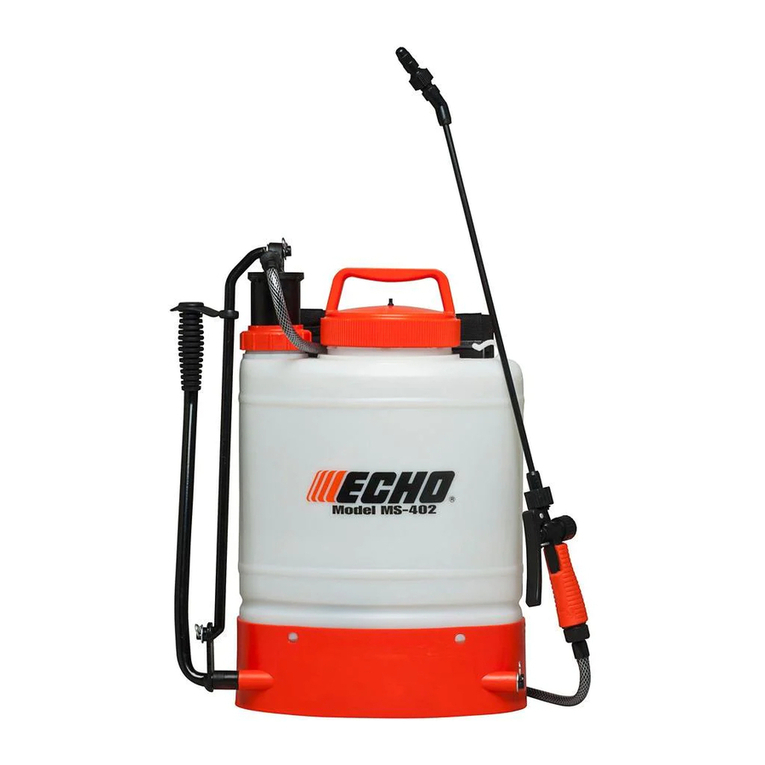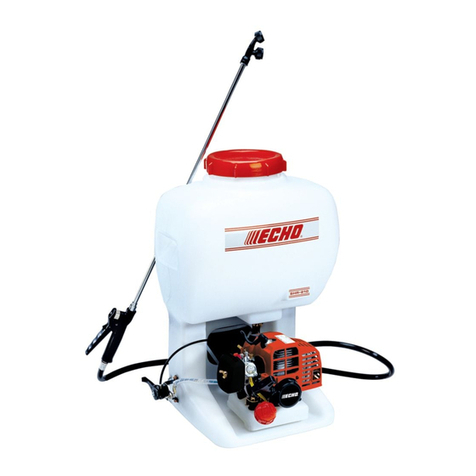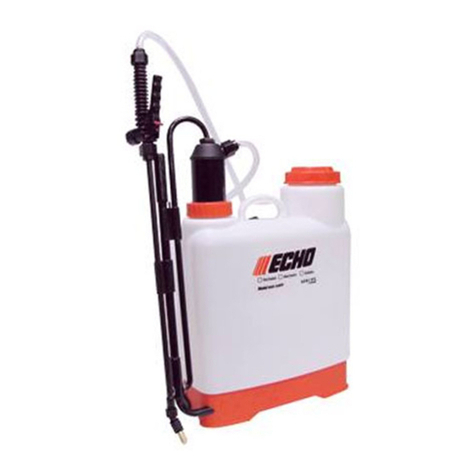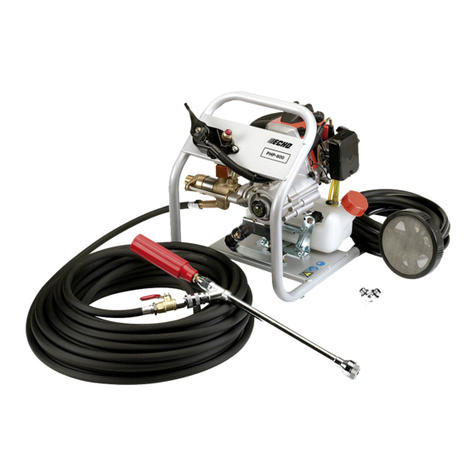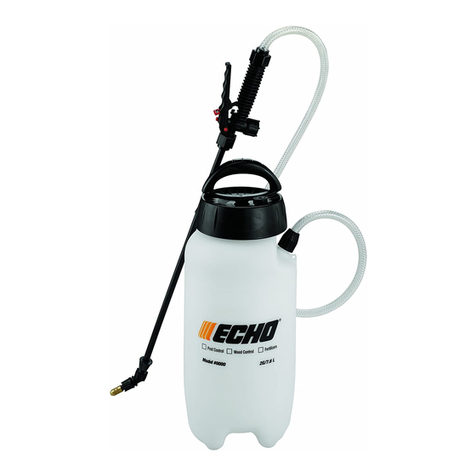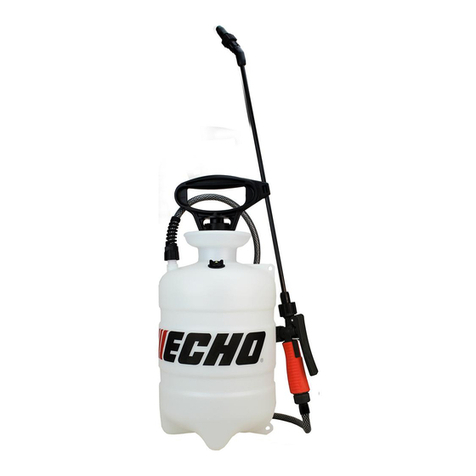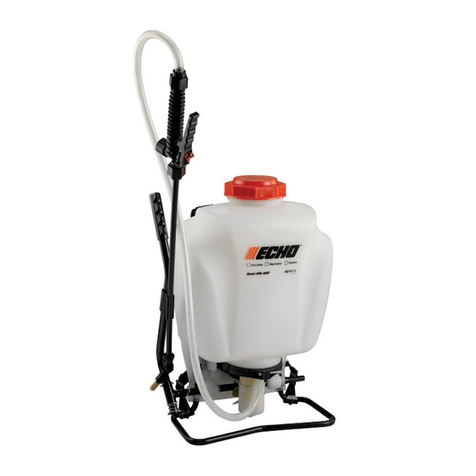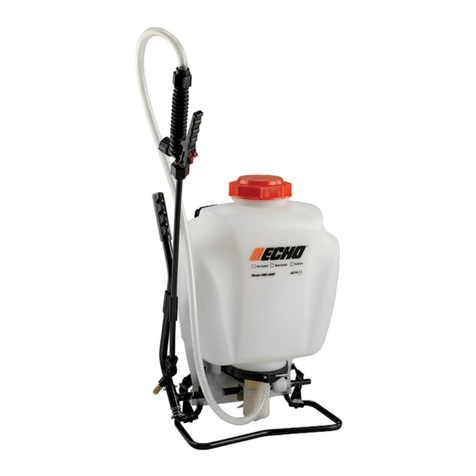
5
Painful or numb
fingers?
See your doctor
VIBRATION AND COLD
It is believed that a condition called Raynaud’s
Phenomenon which affects the fingers of certain
individuals may be brought about by exposure to
vibration and cold. Exposure to vibration and cold
may cause tingling and burning, followed by loss
of color and numbness in the fingers. The
following precautions are strongly recommended
because the minimum exposure which might
trigger the ailment is unknown.
• Keep your body warm, especially the head
and neck, feet and ankles, and hands and
wrists.
• Maintain good blood circulation by performing
vigorous arm exercises during frequent work
breaks, and also by not smoking.
• Limit the number of hours of operation.
Try to fill each day with jobs where operating
the power sprayer or other hand-held power
equipment is not required.
• If you experience discomfort, redness and
swelling of the fingers, followed by whitening
and loss of feeling, consult your physician
before exposing yourself further to cold and
vibration.
REPETITIVE STRESS INJURIES
It is believed that overusing the muscles and
tendons of the fingers, hands, arms and
shoulders may cause soreness, swelling,
numbness, weakness and extreme pain to the
areas just mentioned. Ceratin repetitive hand
activities may put you at a high risk for developing
a repetitive stress injury (RSI).
To reduce the risk of RSI, do the following :
•Avoid using your wrist in a bent, extended or
twisted postion.
•Take periodic breaks to minimize repetition
and rest your hands. Reduce the speed and
force in which you do the repetitive
movement.
•Do exercises to strengthen hand and arm
muscles.
•See a doctor if you feel tingling, numbness or
pain in your fingers, hands, wrists or arms.
The sooner RSI is diagnosed, the more likely
permanent nerve and muscle damage can be
prevented.






